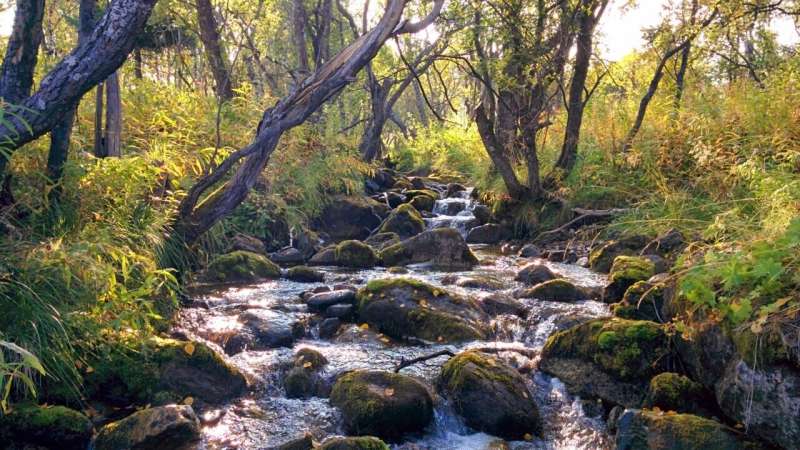Streams and rivers emit more carbon dioxide at night than day

Streams and rivers emit large amounts of carbon dioxide into the atmosphere, but a new study published in Nature Geoscience led by researchers at the universities in Umeå and Lausanne shows that the flux may be greater than previously thought.
Current estimates of carbon dioxide emissions from running water are based on manual samples, where a person goes to the river, takes a sample and analyzes the content of carbon dioxide in the water. But by doing this, we had previously assumed that concentrations are stable over time. In the last decade, there has been a revolution in sensor technology and now we can measure water parameters continuously in the water and know how variable are over time.
In the current study, an international research team led by Lluis Gomez-Gener at the École polytechnique fédérale de Lausanne, Gerard Rocher-Ros and Ryan Sponseller at Umeå University has used the power of sensors to measure carbon dioxide in rivers and streams at a high-resolution. They found that carbon dioxide emissions during the night were greater than during the day.
These results are of great importance for our understanding of the role of rivers and streams in the global carbon cycle, as previous estimates, based on manual samples during the day, underestimated the actual flux.
"For example, 90 percent of the samples gathered into global databases were taken between eight in the morning and four in the afternoon. In this time window only ten percent of days based on our continuous measurements have high carbon dioxide emissions," says Gerard Rocher-Ros, postdoctoral fellow at the Department of Ecology, Environment and Earth Sciences at Umeå university and affiliated with the Climate Impact Research Center, CIRC.
The study is based on measurements around the world, from tropical forests to Arctic tundra and in many different types of rivers and streams.
The observed pattern of carbon dioxide emissions along the day is not so surprising, we know that plants and algae absorb carbon dioxide during the day and reduce concentrations and therefore the emissions are greater at night than during the day.
"But the interesting thing about our study is that we were able to find out where and when this happens. For example, in places with closed forests and dark water, less light is available and this variation effect is lower, while in open rivers and streams, with clearer water or with a lot of nutrients, there is greater growth of algae and a greater difference between day-night concentrations of carbon dioxide," says Gerard Rocher-Ros.
"Global carbon dioxide efflux from rivers enhanced by high nocturnal emissions" is published in Nature Geoscience.
More information: Lluís Gómez-Gener et al. Global carbon dioxide efflux from rivers enhanced by high nocturnal emissions, Nature Geoscience (2021). DOI: 10.1038/s41561-021-00722-3
Journal information: Nature Geoscience
Provided by Umea University




















